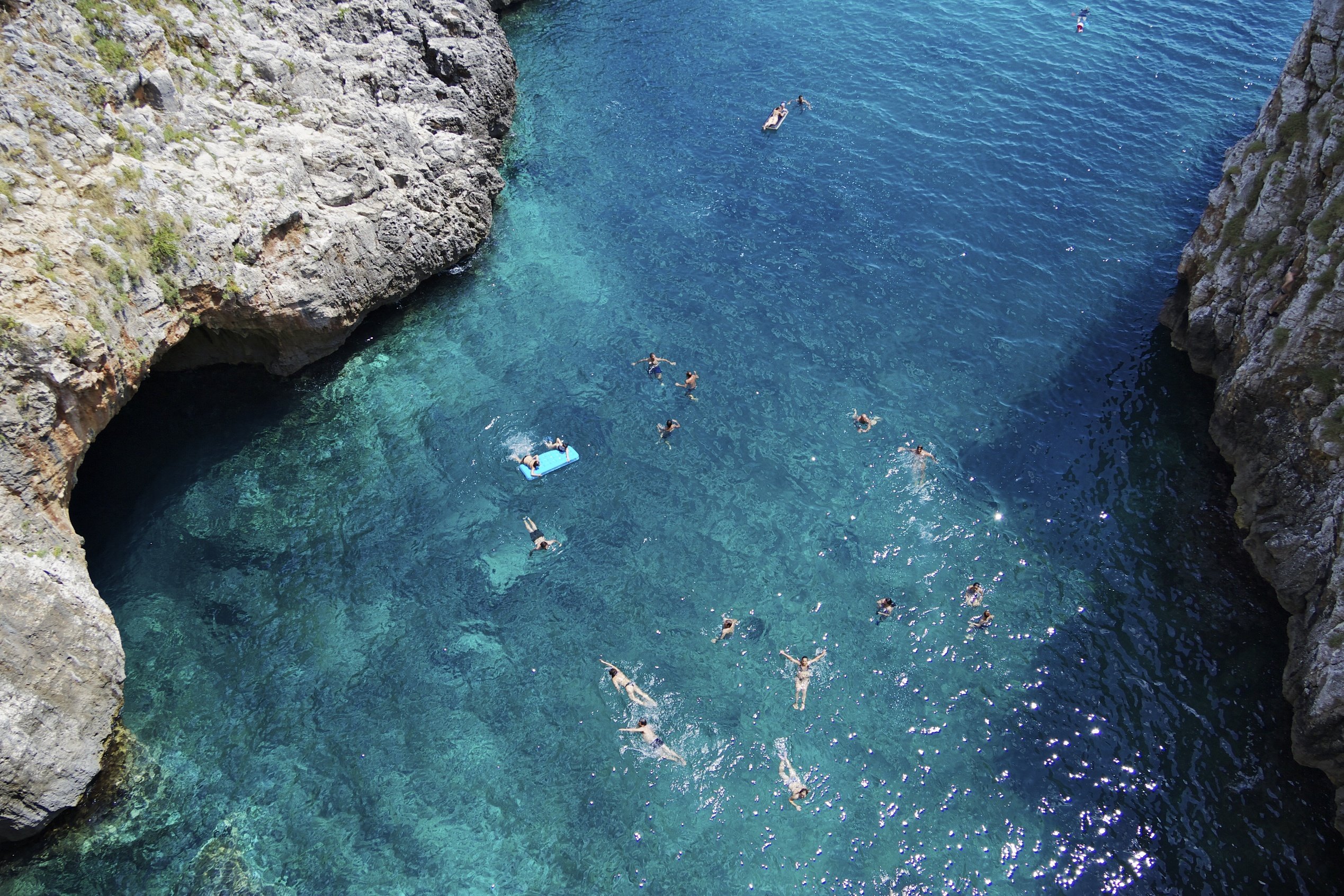“A marvel worthy of any poet”.
Anyone visiting Capo di Leuca just has to visit Ciolo, at the extreme tip of the Salento peninsula.
On the Adriatic coast, Ciolo links Santa Maria di Leuca and Novaglie and the seaside resort of Gagliano del Capo.
The name Ciolo is derived from the local dialect word for a magpie and is due to the many magpies that used to make their homes around the canal.
Ciolo itself has been described as “a marvel worthy of any poet” and what makes it even more picturesque is the beautiful sea that gifts us a wonderful array of new aromas and colours.
Imagine a deep ravine surrounded by steep limestone walls rich in caves that gives way to a small pebble beach in a narrow inlet, a natural gorge produced by the erosion of water meandering timelessly towards the sea with vertiginous cliffs as well as an ancient shepherd’s track that winds its way towards the small town of Gagliano del Capo.
In addition, picture a beautiful natural fjord guarded by a magnificent 40 m bridge – built around the middle of the last century – with steps leading down steeply to the crystal clear waters of the sea below.
Popular with the daredevils who challenge these sheer cliffs by diving into the sea from them or even the bridge itself, this is a thrilling spectacle set against the backdrop of a breathtaking landscape.
The seashore here offers a rocky seabed which is ideal for scuba and snorkelling alongside its very characteristic coastline with its many natural coves and an impressive cave that is accessible both from the shore or the sea.
The cave itself often shelters marine life, especially sea turtles and Monk seals.
The headland ridge itself is rich in evergreen Mediterranean maquis flora and is home to rare species such as the Leuca ‘fleur de lys’ cornflower and several species of wild orchid.
Scattered in and around the ridges of the valley, there are numerous caves in which fossils and pottery from the Neolithic and Palaeolithic have been discovered.
The cave of Prazziche, in which were found fossils and remains of typically African wildlife such as rhinoceros bones, as well as pottery artefacts dating back to the Palaeolithic and Neolithic, is just one of many examples that bear testament to the fact that this area has been inhabited since ancient times.



